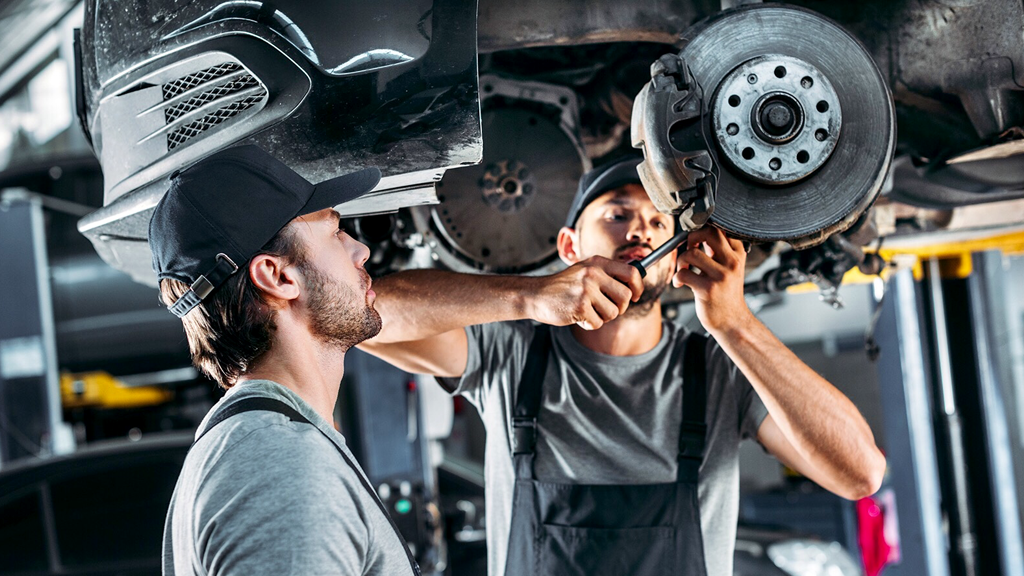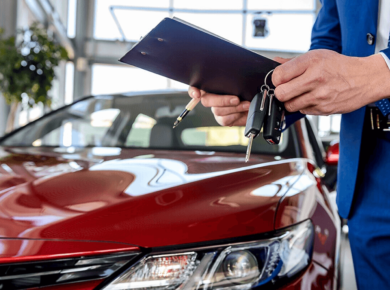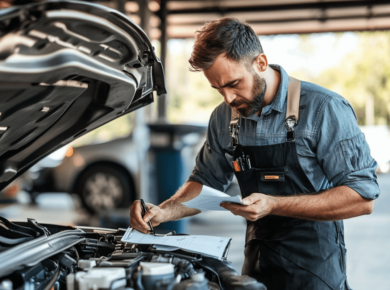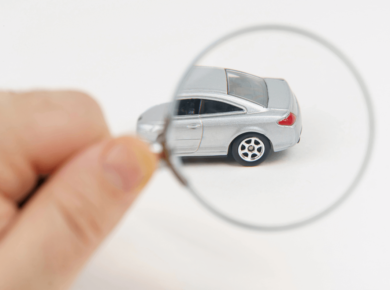Maintaining the brakes on your car is one of the most important factors of safe driving, as your brakes allow you to react to the situation on the road as fast as possible. Faulty brakes can lead to a serious collision, so you should know key aspects of how to take care of your braking system. In this blog, we’re explaining how to maintain car brakes.
Components of the braking system

Since an improperly maintained braking system reduces the overall performance of a vehicle, putting you, everyone around you, at risk, so you have to understand how your car decelerates. A braking system consists of a few important components:
- Master brake cylinder
- Brake pads
- Brake rotors
- Brake calipers
- Brake lines
- Fluid reservoir
The master brake cylinder transmits the pressure applied to the brake pedal to the wheels and brake rotors, causing the car to slow down. The calipers are responsible for moving the pads closer to the brake rotors, which generate stopping power when compressed by the brake pads.
Warning signs

Most cars made before the 1970s have a drum brake assembly, while all modern cars come standard with disc brakes. Some luxury sports cars like Ferrari or Porsche can have a ceramic braking system. Regardless of the type of brakes on your car, there are a few signs which can give you a hint that something is wrong:
- Squealing
- Spongy brake pedal
- Increased brake distance
- Brake fluid leakage
- “Brake” lamp on the dashboard
If you’ve noticed any of the abovementioned, inspect the brakes thoroughly, or take your car to a mechanic if needed. Both squealing and poorer braking are usually caused by worn-out brake pads, which rub over the brake rotor.
A low brake fluid level accounts for pedal sponginess and can be a reason for the “brake” signal lamp on the dashboard, as a lot of modern cars come standard with brake fluid sensors. If you see dark stains under the car, one of the brake lines is likely to be torn or damaged and needs to be replaced immediately.
How to maintain car brakes
Taking care of your brakes before issues appear not only increases the longevity of the braking system, but keeps you safe. Fortunately, keeping your brakes in good condition is much easier than you think.

Following scheduled inspections at service stations is a must to make sure you’re driving a car with properly working brakes. Don’t tailgate: keep ample distance between you and the car you’re following, otherwise your brakes will be worn faster. Abrupt braking after speeding causes more extensive wear & tear of your brakes.
Check the brake fluid level regularly and don’t forget to flush it according to the instructions in your driver’s manual.
Adjust your driving style: don’t press the gas and the brake pedals simultaneously, take into account weather conditions (since road debris and grime can cause oxidation of brake rotors, leading to rust). Use engine braking: letting your car decelerate inertly without pressing the brake pedal.
Bottom Line
Regular car maintenance requires keeping an eye on a lot of things, especially the brakes. Following these simple tips will help you not only make sure your brakes are kept in perfect condition but also drive safely without putting others, and yourself, at risk. If you’re reading up on car maintenance to get ready for your next project or first car, use our Vehicle Finder to get started. Once you’ve found your dream car, register with us to place a bid right from the comfort of your home. Upload a copy of your passport or government-issued ID and place a fully refundable security deposit to complete your registration. You can contact us online or call us at + 1 (360) 347-1300 (6:00 AM – 3:00 PM Pacific Standard Time) with any questions.








